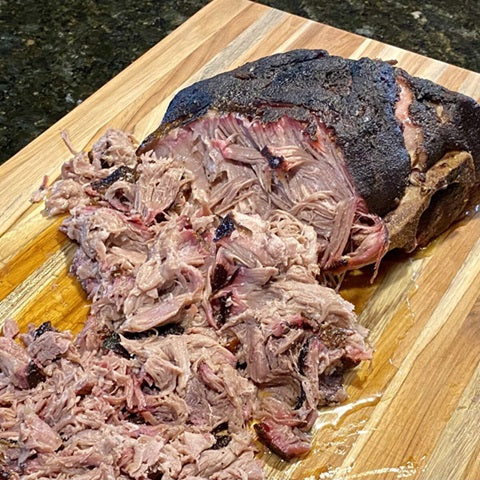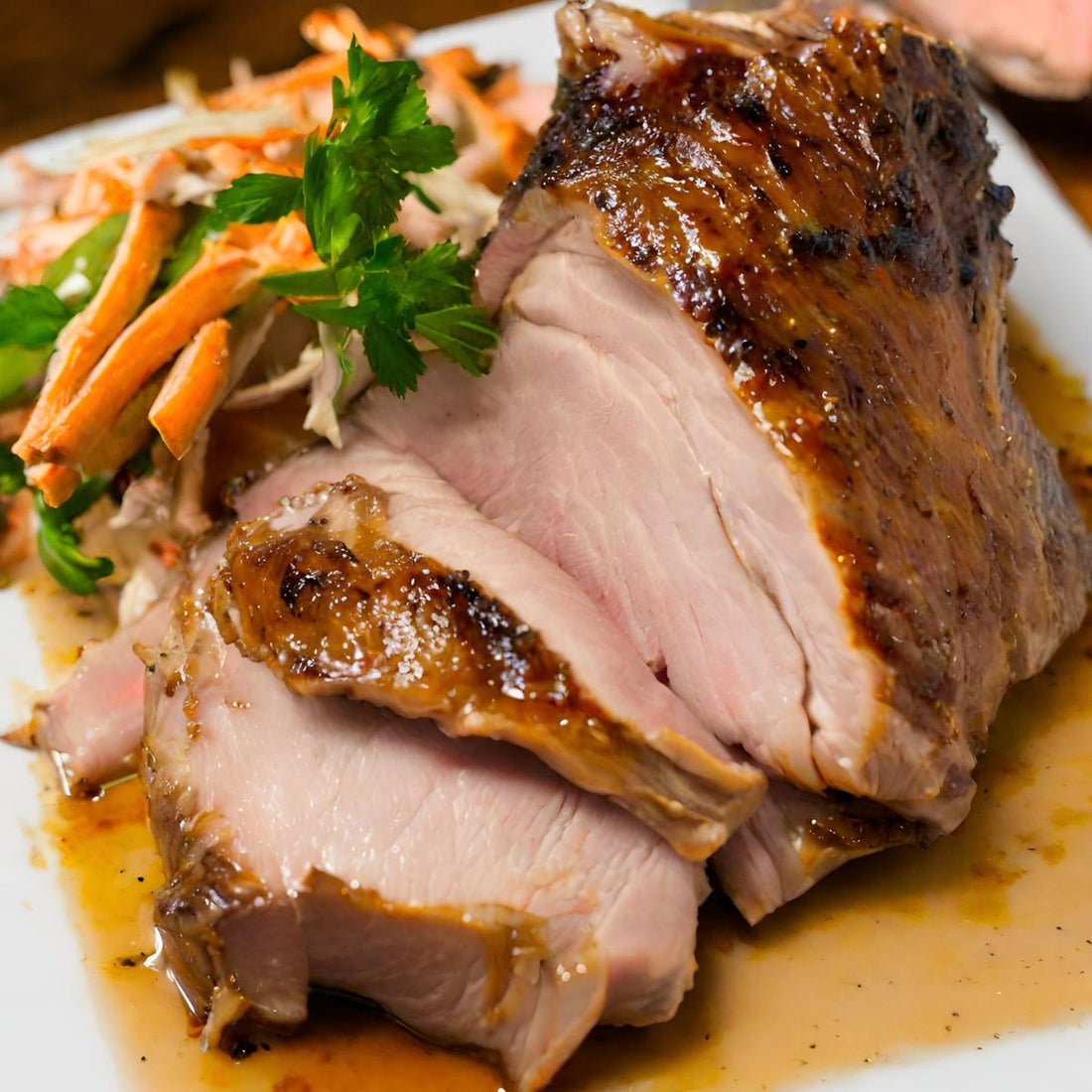In the carnivorous world of BBQ enthusiasts and meat lovers alike, there's often a bit of confusion when it comes to two particular cuts of pork: the pork shoulder and the pork butt.
Despite the suggestive names, they are not that different. But why are they named that way? Most importantly, how do they differ in taste and cooking methods?
Pork Shoulder Vs Pork Butt Quick Comparison
|
Aspect |
Pork Shoulder |
Pork Butt |
|
Origin |
Cut from the lower shoulder part of the pig. |
Cut from the upper shoulder part of the pig. |
|
Flavor and Tenderness |
Tough cut that becomes flavorful and tender when slow-cooked |
Tender and flavorful because of the high amount of connective tissue and fat. |
|
Cooking Methods |
Benefits from slow, wet cooking techniques such as stewing and stewing. |
Ideal for slow roasting or smoking, self-basting and moist. |
|
Nutritional Profile |
Excellent source of phosphorus, protein, and vitamin B6. |
High in protein, minerals like selenium, and B vitamins. |
What is Pork Shoulder?

Also called the picnic shoulder or picnic roast, the pork shoulder is a primal cut from the pig's shoulder part. Now, don't let its name confuse you. Despite being called a 'shoulder,' it's not exactly similar to our human shoulder. Instead, it comes from what we consider the upper arm and shoulder blades in human anatomy.
The pork shoulder comes from a hardworking region of the animal and is full of connective tissues. As such, the pork shoulder benefits from slow cooking techniques which break down the muscles and result in a tender and flavorful plate. This cut has lots of fat. Therefore, it has a more pronounced flavor.
What is Pork Butt?

Don't let the name fool you; the pork butt is not cut from the rear of the animal. Instead, it comes from the upper shoulder of the pig, right above the pork shoulder. Also known as the Boston Butt, this cut has a rich history. Back during colonial times, pork was stored and transported in barrels, often referred to as "butts". This is where the pork butt got its curious name.
The pork butt is a favorite to many pork lovers because of its high-fat content. When cooked slowly and in low heat, it yields a tender and flavorful result perfect for pulled pork, stews, and roasts.
Pork Shoulder Vs Pork Butt Comparison
Here is a side-by-side comparison:
-
Pork Shoulder Vs Pork Butt: Origin
Both the pork butt and shoulder are from the shoulder of the animal. While the name may suggest otherwise, these cuts come from the same area with the pork butt coming from the upper area and the pork shoulder coming from the lower area.
-
Pork Shoulder Vs Pork Butt: Flavor and Tenderness
The pork shoulder and pork butt have many similarities. In fact, many cannot tell the differences in flavor and tenderness. Both cuts are tough due to their location. However, with low heat and a little patience, these cuts turn out to be flavorful and tender such that you can easily pull them apart.
If we are to choose one, the pork butt has a wonderful balance of meat and fat which gives it an exceptional flavor and succulence. It’s naturally tender and perfect for slow cooking, resulting in meat that’s easily pulled apart.
-
Pork Shoulder Vs Pork Butt: Cooking Method

The pork shoulder, being a leaner cut, has a slightly tougher texture. As such, this cut will benefit from slow and wet cooking techniques such as braising. It's the best for pulled pork recipes, where the slow cooking technique softens the tough connective tissue.
On the other hand, pork butt is higher in fat. This makes it best for slow roasting or smoking. The fat melts as it cooks, self-basting the steak. It's the go-to cut for barbecued pulled pork, where its rich flavor and succulent texture shine.
The key to cooking both cuts is patience. Whether you're braising a shoulder or smoking a butt, low and slow is the way to go!
-
Pork Shoulder Vs Pork Butt: Nutritional Profile
Pork shoulder contains a good amount of protein, providing about 23 grams per 3-ounce portion. It's also a good source of nutrients like vitamin B6 and phosphorus. On the other hand, pork butt packs an average of 24 grams per serving. It's also rich in minerals and B vitamins.
Whether you prefer the shoulder or butt, both cuts offer a bevy of nutritional benefits. The deciding factor often boils down to personal preference for flavor and texture.
-
Pork Shoulder Vs Pork Butt: Cost and Availability
Moving on to the price and availability, the picnic shoulder is generally sold at a lower price than the pork butt. This is partially a result of the larger bone and tougher meat which requires longer cooking times. The shoulder is readily available all year round in most supermarkets and butcher shops. The Boston Butt, on the other hand, is usually a bit pricier. It's also readily available in most food stores.
Conclusion
When it comes to the culinary duel between pork butt and pork shoulder, it's clear - there's no definitive winner. Each cut has its unique strengths and uses. While they have their differences, both cuts are perfect for slow, low-temperature cooking methods. They also boast a rich, meaty flavor.
However, the pork shoulder is leaner and often better suited for slicing. The fattier pork butt is the go-to for pulled pork dishes. Overall, remember that no matter your preference the secret to a mouthwatering dish lies in the quality of the meat and the love you put into cooking it.
Related Articles
Best Cutting Boards for Brisket
RELATED PRODUCTS YOU MIGHT LIKE
See Virginia Boys Kitchens On Amazon
We are on Amazon, see our storefront here. Use coupon code VBKBLOG10 for 10% off your entire purchase of any Virginia Boys Kitchens on Amazon. Apply the code at checkout.


